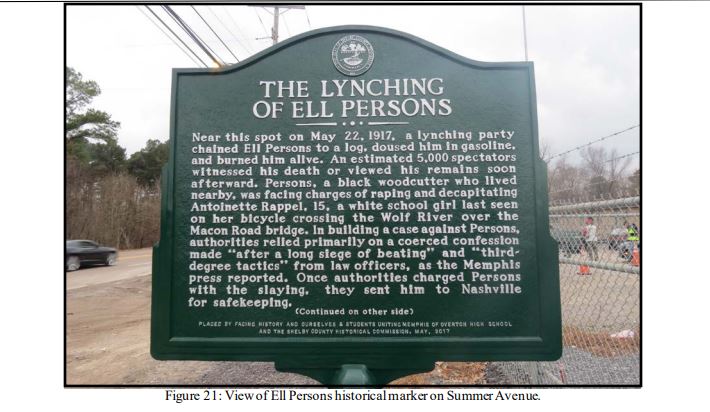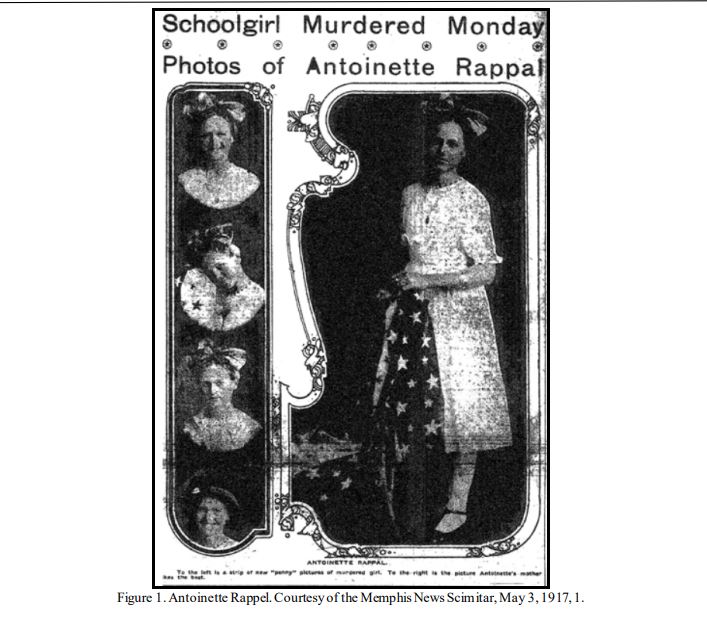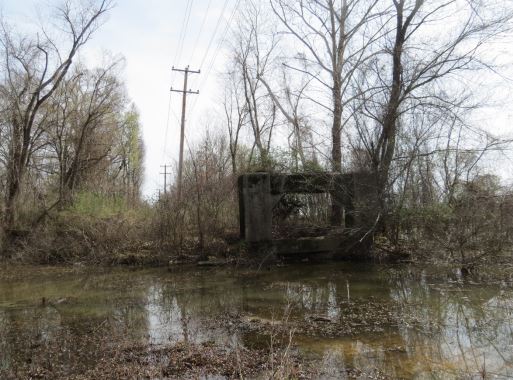MEMPHIS, Tenn. (WREG) — The site of a brutal mob attack more than a century ago in Memphis could become the first lynching site in the country listed on the National Register of Historic Places, a local historian says.
It was a case that echoed all the way to Washington and New York City.
The 1917 lynching of Ell Persons on the Macon Road bridge over the Wolf River was so violent it led to the establishment of a Memphis branch of the NAACP and helped inspire a silent march in New York City, according to Kelsey Lamkin, a historian with the Lynching Sites Project who researched it for nomination to the National Register of Historic Places.
The fact that it was attended by thousands and so well documented by newspapers makes it stand out, Lamkin said.
“While a lot of times this was kind of done in secrecy, this was not,” Lamkin said. “Newspapers reported ahead of time that there would be a lynching and that his body would be burned, and that’s what happened.”

The details are shocking more than 100 years later.
It began with the murder of Antoinette Rappel, a 16-year-old white girl whose decapitated body was found near the bridge on May 2, 1917. Rappel was reported missing a few days earlier and had last been seen riding her bicycle to catch the school wagon to Treadwell School.
Despite a lack of evidence, Persons, a woodcutter who lived nearby, was targeted by authorities as the suspect. Persons allegedly confessed after he was beaten by investigators.
The sheriff, fearing mob violence, relocated Persons out of the area, but a group of vigilantes abducted him from a train. Newspapers announced the lynching the next day, and sandwiches and drinks were sold to spectators on the bridge.
Persons was chained to a log, doused in gasoline, and set on fire. His body was dismembered. A group of white men took Person’s head and foot by car to Beale Street, at that time Memphis’ Main Street for African Americans, and deposited them in front of onlookers.

Today, while the bridge is long gone, its location is known and some concrete bridge supports remain. The 0.19-acre wooded site along the Wolf River is near the 5400 block of Summer Avenue, where a historic marker for the Ell Persons lynching was placed by the Lynching Sites Project in 2017.
The area is surrounded by an interstate and commercial development today but would have been on the rural outskirts of Memphis outside the city limits in 1917.
“It has really not changed very much. The old Macon roadbed is still visible,” Lamkin said.
Lamkin said the NRHP designation is honorary, but the larger plan is to include the site in the National Park Service system.


Rich Watkins, board president for the Lynching Sites Project, said he testified to a House Committee this year in support of a bill sponsored by Rep. Steve Cohen that would allow evaluation of lynching sites within 100 miles of Memphis.
The LSP has already done some of that work, mapping 24 confirmed and possible sites around the county. The last was in 1939.
Watkins said that, while the exact details have to be worked out, he’s hopeful that the Ell Persons site can eventually be under partial or total management by the National Park Service.
The LSP also received a grant this year to produce an augmented reality map that could serve as a digital historic marker, connecting visitors at the site with resources such as interviews. The group is working with CodeCrew on the app now, he said.
The Memphis Landmarks Commission will consider approval of the 0.19-acre historic site at its Dec. 22 meeting. If approved, it would be considered by the Tennessee Historic Commission in January and the Department of the Interior after that.
Lamkin said her research indicates it would be the first lynching site recognized on the National Register.
► Read a history of the Ell Persons site here.
► See a map of other sites from the Lynching Sites Project





































